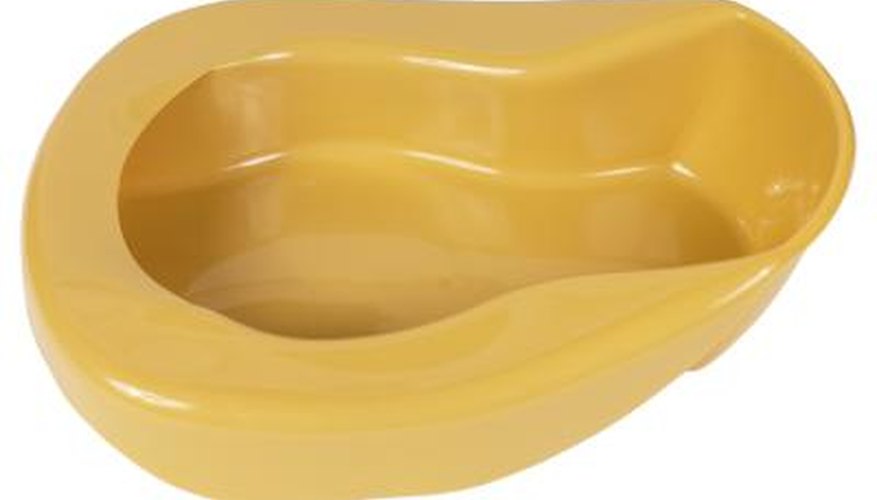Hospitals use bedpans as portable bathroom solutions for bedridden patients suffering from incontinence or other diseases that prevent them from using a normal bathroom. Bedpans can be used for urine or bowel movements, and are made in several shapes, sizes and materials. The two most common types are standard contour bedpans and fracture bedpans.
Regular Bedpan
Regular bedpans are contoured to fit the physical shape of a patient's posterior. The pan has a shallow bowl underneath to collect liquid and solid waste. Regular bedpans can slide underneath a patient with full or limited mobility.
Fracture Bedpan
Fracture bedpans have an overall wedge shape with a lower collection pan. The wedge shape is able to slide underneath patients with limited or no mobility. Common patients for fracture bedpans include patients with broken bones, missing limbs, paralysis or any other ailment that heavily limit movement.
Urinals
Urinals collect liquid waste from patients. Typical urinals consist of a contoured entry point for genitalia and a lower reservoir for urine collection. Urinals have been designed for both male and female patients, with differing shapes for each gender.
Variations
Bedpan materials differ depending on use. Common materials include plastic and metal. Plastics provide a cheaper alternative to metal bedpans and allow for disposable bedpans. Disposable bedpans can be thrown away after a single use. Multi-use bedpans can be washed and disinfected after every use.
- Bedpan materials differ depending on use.
- Multi-use bedpans can be washed and disinfected after every use.
